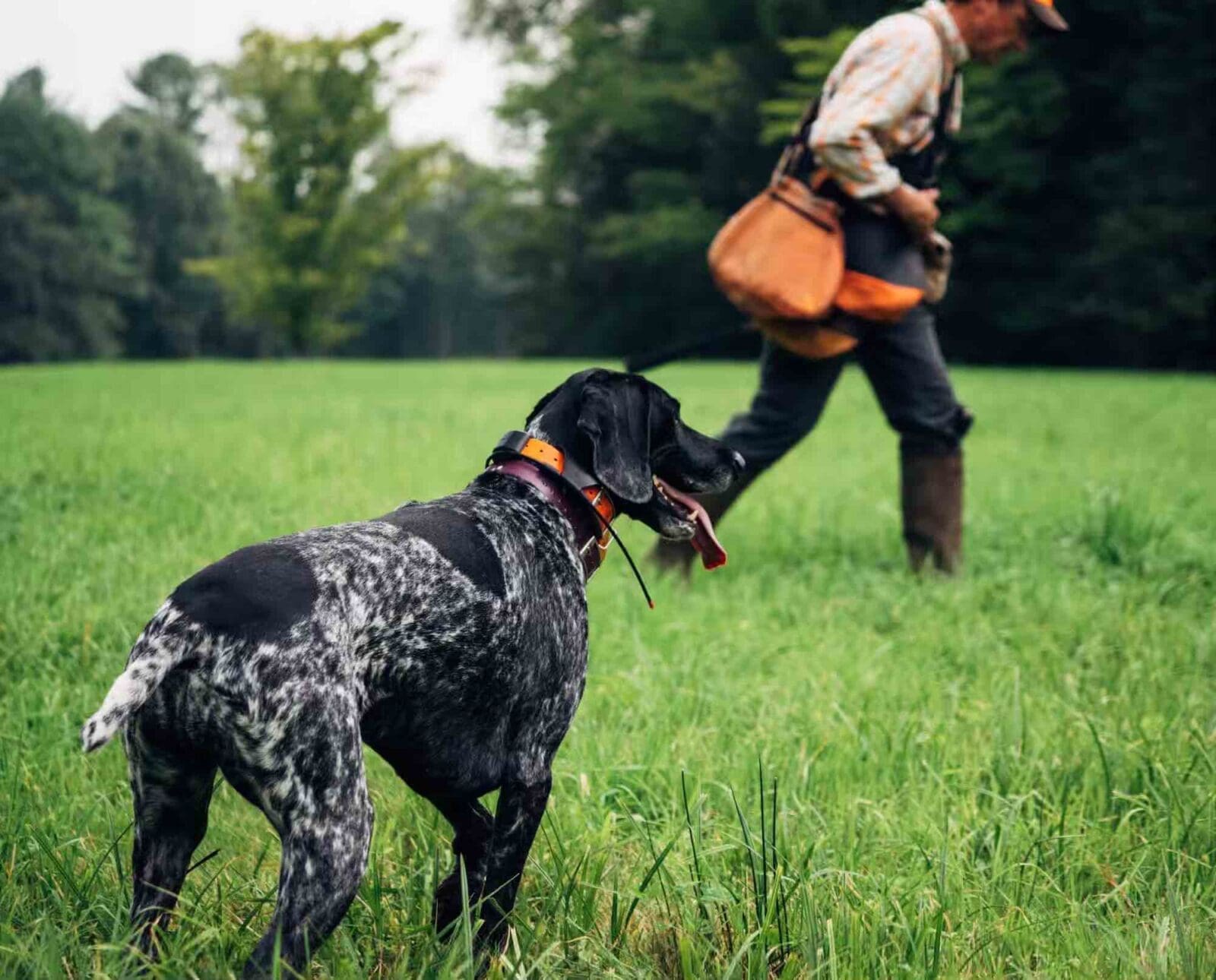Home » Project Upland Listen » Hunting Dog Confidential Podcast » The Modern Era of Bird Dogs in North America: HDC Episode #31
The Modern Era of Bird Dogs in North America: HDC Episode #31

Jennifer Wapenski is the Director of Operations and Managing Partner…
The modern era of hunting dogs is characterized by technology and information, making new breeds and new ideas more accessible than ever
LISTEN on Apple | Google | Spotify | Stitcher
The end of World War II saw thousands of servicemen and servicewomen returning home to the United States and Canada, many of whom brought home new dogs they’d purchased while in occupied Germany. These “new” dogs were unlike the Setters and Pointers that dominated the bird dog scene in North America. Defying labels, these dogs could search and point like Setters, retrieve like Labradors, and track like hounds.
Some of these dogs fit in well with the American field trial culture and found success alongside Setters and Pointers. Others, however, struggled to find success in the competitive environment that favored fast, big-running dogs over the versatile, jack-of-all-trades dogs produced in Germany.
As the new breeds looked to gain a foothold in North America, some clubs sought marketing help to take advantage of the growing influence of television and mass media to generate interest in their breed. The Weimaraner is a classic example of publicity and popularity gone wrong—while the efforts to market the breed were wildly successful and led to an explosion in popularity, the dog failed to live up to all the wonder-dog hype and quickly fell out of favor. As with anything, popularity is a double-edged sword; breed clubs have long sought to straddle the line between promoting the dogs to hunters without losing control of the messaging and, ultimately, the natural hunting abilities.
The introduction of the versatile breeds from the European continent eventually led to the formation of NAVHDA, which represented a stark departure from the competitive nature of traditional field trials. This new system was based on the German versatile hunting dog system with some changes made to better suit the North American hunting traditions. What began as an idea in a living room in Canada eventually became an international club with thousands of dogs tested annual and membership growing every year.
The late part of the twentieth century saw a major transformation in the availability of technology and information, ultimately culminating in the introduction of the internet and, later, social media. Suddenly, hunters could connect with like-minded people across the globe. Breeding decisions were influenced by genetic testing. Litters could be advertised and promoted with the click of a button. Information that was once limited to members of certain clubs is now widely available to anyone with an internet connection. This modern era is characterized by technology, information, and—ultimately—connection.
What does this new era mean to the future of breed clubs and registries? Craig has a few ideas about how these organizations will need to change, or else risk becoming irrelevant. Tune in to hear his vision and encouragement for riding the inevitable waves of change.
Enjoy the show and don’t forget to rate, review, subscribe, and share this podcast.
Share | Comment, review and discuss this episode of the podcast in our Project Upland Community Facebook group.
Hunting Dog Confidential is presented by Eukanuba Premium Performance Dog Food and supported by Syren USA and Kent Cartridge.
Jennifer Wapenski is the Director of Operations and Managing Partner at Project Upland Media Group. She has a lifelong passion for the outdoors, dogs, and wildlife; as an adult, she discovered that upland bird and waterfowl hunting were natural extensions of these interests. What started as initial curiosity soon escalated into a life-changing pursuit of conservation, advocacy, and education. Jennifer serves in a variety of roles such as the Breed Warden for the Deutsch Langhaar—Gruppe Nordamerika breed club and on an advisory committee for the Washington Department of Fish and Wildlife.



